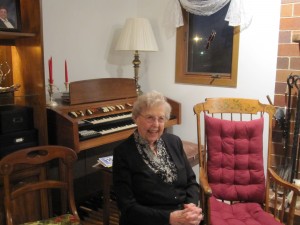
Here’s the complicated thing: COVID-19 smacks some people up the side of the head like a baseball hat, but others seem to spend weeks with low fevers, aches, and other odd symptoms while remaining able to go to work. Do they go to work? What if they can’t pay the mortgage if they don’t go to work? Low-fever Larry can definitely spread the disease and he may never take that COVID-19 test. He’s not that sick — and he definitely does not want to know. And kids catch this disease, even if their survival odds are excellent. Some are asymptomatic, but the evidence shows asymptomatic little ones may nonetheless be carriers. Some kids know they feel sick, I’m sure — but they are not telling dad or mom because they don’t want to get stuck at home in bed.
How many teachers have been laid low by the disease of the month that swept through this year or last year’s classroom? Awhile back, I wrote a post that included the sick kids in winter coats. The room is 75 degrees and Xavier is huddled in his thick, puffy blue coat. We know what to expect when we touch his forehead, even before we send him to the nurse.
Sick kids come to school. Sometimes parents know they are sick, but other times that fact gets lost in the bustle of everyone getting ready to go to work or school. Where is Marisol’s art project? What happened to Daniel’s gym uniform? Are we out of baggies? What can I put the carrots in? You were supposed to put the dog out!
As I write this, I remember a bank vice president. She was determinedly upwardly mobile and her daughter was in my daughter’s preschool. I got pink eye twice that year. Once might have been an accident, but the second time — that woman knew she had a meeting, and told us she had to run for that reason. She dropped her girl off so fast no one had time to register the color of her daughter’s one eye, soon to be two eyes. A few other parents and I looked at the girl. We asked the teachers to please keep little “Lauren” away from our own kids and the teachers glumly agreed. No one wanted Lauren that day, but Lauren was on the premises, her mom was unreachable, and the rest of us had to get to work. The first pink-eye epidemic might have been a mystery. The second one wasn’t.
Here’s a sad truth captured in that comment above: Some people know the right thing to do and they choose not to do it. I think certain sick kids don’t even realize they are sick, especially those with bad allergies. Others know they do not feel well, tell mom or dad they do not feel well, and get put on the bus anyway. Those parents putting their child on the bus don’t want others to fall ill — although I honestly think a number don’t give a damn — but they care about themselves first. Lauren’s mom was a pleasant, fundamentally likable woman who decided to throw everyone else under the bus for her own career advancement.
I can be sympathetic to some parents who put their feverish kid on the school bus after they decide “he’s not that sick.” No insurance, no sick leave and a job where you can easily be replaced? Parents living near the edge often go to work sick — and also work when their child is sick. Al fin y al cabo, at the end of the day, the rent must be paid. Rent and car payments may trump bed rest and liquids.
Not long back, many of us were sitting at home, wondering if we had enough food and toilet paper. Our dogs were loving all the walks. We were enjoying catching up on TV and the books by the bed. But for teachers, a lost feeling followed, a yearning to get back to that group of kids we are supposed to prepare for the next big step in their learning lives.
Eduhonesty: We have to let that yearning go for now in some areas, as best we can. Maybe your school has resumed live instruction this year. Maybe it hasn’t. Maybe online learning will work for you; I fervently hope so. But we can’t go back to business as usual.
In hotspots, schools must be closed. In impending hotspots, the schools must be closed. For many parts of the Midwest, that closure would be overkill, but the map looks ominous in other areas. https://www.nytimes.com/interactive/2020/us/coronavirus-us-cases.html This bug appears to be exceptionally easy to catch and while it’s not the Spanish Influenza of 1918, only the very elderly remember anything like what we are seeing today, those men and women who watched polio shut their towns when they were young.
This post is for the teachers, parents and others who are wondering if we have to take such extreme measures. Please keep those sick children in mind. Sick kids often don’t tell parents how they feel; they want to see their friends. I’ve had many students come to school feverish and even aching, because boyfriend, girlfriend, or bestie was there. Parents don’t always know. Kids don’t always tell. Two-hundred thousand dead and still counting.
Learning is a lifelong process. Fractions and metaphors can wait awhile. In the meantime, we have to help protect our grandmas, grandpas, family members, first responders, health care workers and community. We have to protect ourselves.

For those at a loss for what to do, I suggest preparing to join the fight for universal heath care and sick leave. It’s time to start gathering stories and sharing them. When the crisis abates, those stories need to flood cyberspace as we try to fix a healthcare system that’s been running on fumes for the poor, for those moms and dads who eventually piled into the pickup to go to the ER because they couldn’t afford to stay home with Xavier until Xavier was so sick that they truly had no choice.
